27 September 2013
In response to great demand, we have decided to publish on our site the long and extraordinary interviews that appeared in the print magazine from 2009 to 2011. Forty gripping conversations with the protagonists of contemporary art, design and architecture. Once a week, an appointment not to be missed. A real treat. Today it’s Fernando and Humberto Campana’s turn.
Klat #01, winter 2009-2010.
On a first glance, Brazil seems to have little to share with design. Looking at the country from the sky, it is easier to figure it out as a massive green spot framed by over-crowded beaches with beautiful ladies getting tanned all day. But a more sincere portrait of this South-American country, a mix of different traditions, wild nature and playful conviviality, can be easily read in the colorful and unexpected design of the Campana brothers, made of a wide range of furniture, seats, tables and couches able to shock for their unusual shapes. Their work incorporates the idea of transformation and re-invention, giving preciousness to day-to-day materials, carries the creativity in design, careful to very Brazilian characteristics – the colors, the mixtures, the creative chaos, the triumph of the simple solutions. Over the past twenty years, Fernando and Humberto Campana have established themselves among the most successful designers of our time, implementing their distinctive language in a wide-ranging oeuvre. The Campanas – this is how they are called by design professionals – started working together in 1989 after finishing university in San Paolo. Almost ten years later, in 1998, the MoMA of New York presented their first exhibition, curated by Paola Antonelli, called Project 66: the Campanas in a duo with Ingo Maurer. The idea of the show was to join two designers of very distinct background that shared the same poetics. It meant the door of success for Humberto, born in 1953, a degree in law («I wanted to be an Indio and now I’m a designer», he stated) and Fernando, born in 1961, a degree in architecture, who since the really beginning have always thought about a design closely linked to their mother country, paying attention to the selection of materials applied and Brazilian traditions, but still able to provide striking visionary experimentations. The close connections to the everyday life is a constant inspiration for every piece they are conceiving and a fil rouge through their entire collection: from the limited editions and one-off pieces, since years super requested by worldwide collectors, to the industrial productions, characterized by a distinctive craftmanlike-manifacture. «How is it possible to produce in huge numbers the series Cotton String, Aguapé, Verde, Azul and Vermelha pieces, made of 450 meters of cable!?», the brothers were wondering times ago when first met the company, Edra, which believed in their talent. With a peculiar tension for recycling and re-using of wasted materials, the fundamental idea is to give new birth and new meaning to already existing products. The Campanas truly believe that «beauty rely in the real moment of creative production», enjoying to work with their own hands at every stage of the process. «We have the real perception of the material only if we work it out ourselves». KLAT has met them during a special year for the designers, which has seen them stage an epoch-making exhibition at the Vitra Design Museum in Weil am Rhein (Antibodies, until February 28, 2010) and, for the first time in their lives, at grips with the scenes and costumes of a ballet, choreographed by Frédéric Flamand.
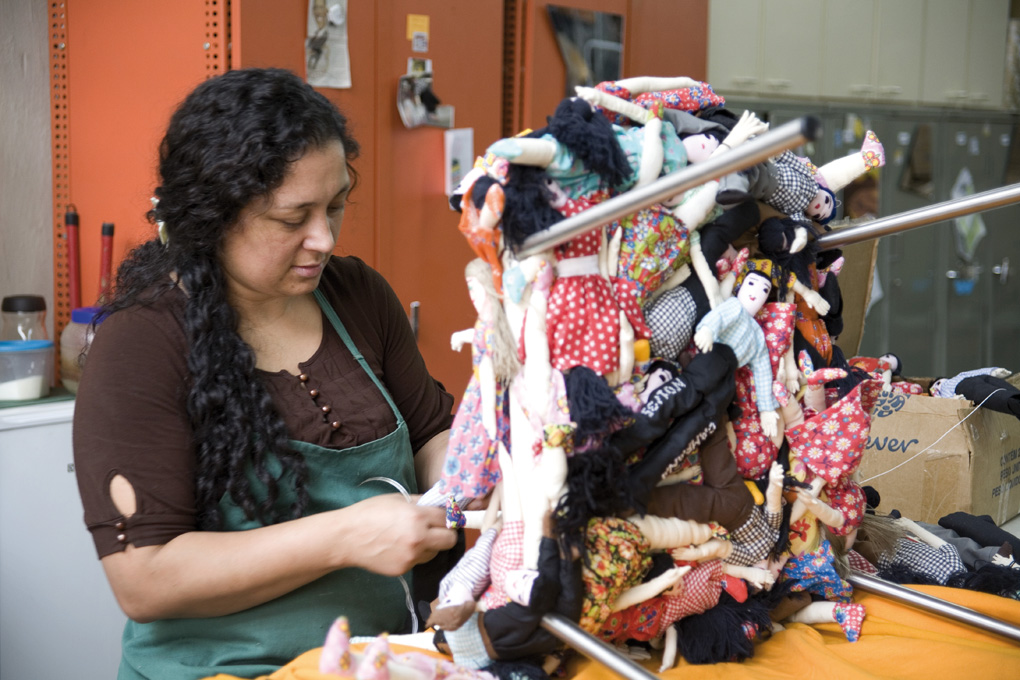
Studio Campana, Banquete, production. © Estudio Campana. Photo: Estudio Campana.
In the past twenty years you have developed a distinctive and visually opulent language, which lent a unique voice to our times. We can say that you navigate between design and art. Do you prefer to be considered artists or designers?
F+H: We prefer to be considered designers rather than artists, because we actually “make things” people are supposed to use. Referring to the role of objects, design has to have a meaning. Anyway, objects can bear emotions and significance aside from their practical functionality.
Where does your first creative impulse for a project come from? Does it come from walking, reading, dreaming?
F+H: Watching life around us.
How did you learn your way of conceiving design?
F+H: We learned from the streets and from worldwide different capitals luxurious penthouses, from graffitos and from the history of art. We are able to use with the same consideration precious jewels and dirty cardboards, old plastic slippers and stuffed animals. In the Favela Chair, for example, we have attempted to manifest the idea of how life is fragmented in a kind of chair that is chaotic in its very construction.
How would you describe the Campana’s world?
F+H: Our world is shaped as a horizontal universe where every single object of everyday life becomes alive, producing
an uncommon and fresh debate: a kind of constellation
of hybridisms among soft dolphins, joyful crocodiles, stuffed Mickey Mouses and Teddy Bears.
What is a project for you? A charming adventure, a professional challenge, a serious game, an expression of your intimate feelings, a statement or a private entertainment?
F: All of them, together or separately, guided by our intimate feelings.
H: A project is to make my dream comes true.
How do you decide if a project should be realized or not, meaning how do you decide whether to accept or refuse
a project? Is there any criteria?
F+H: In most of our projects or experiments, we make an effort to accomplish and document the idea, avoiding it to be only in the imagination. We do not take many projects or commissions at the same time, since we want to maintain the essence of our creations and respect the image of the company we are working with. Also, our “gut feelings” are very important when we consider starting long term collaboration with new clients. For us, the challenge proposed by the new partner and the stimulation provoked by it, which will contaminate our minds, are reasons and criteria of choice.
How do you start working on a project? How do you start representing your first idea of it? Do you make sketches in a notebook, do you bring together materials? Do you make a written note, a description of it?
F+H: Most of the times by the materials, traduced into prototypes. Sometimes sketches, other times maquettes, very few on a computer.
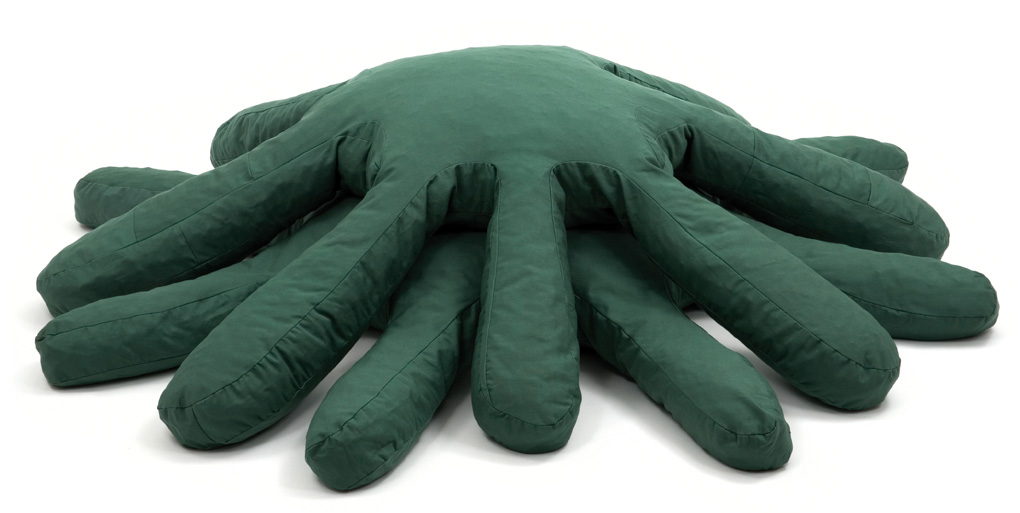
F+H Campana, Aster Papposus, 2005. Design for Edra, © Estudio Campana, Photo: Fernando Laszlo
What is your approach to materials?
F+H: It’s a kind of flirt with the material which stands up asking: what can we be transformed into? The material dictates the form and the function in our work. Materials are the ones which are going to determinate our projects: in the conceptions until the final production.
What is your definition of design?
F+H: Desire materialized into objects, furniture, fashion or way of thinking a better life.
What is your approach to design?
F+H: Supply our spiritual needs and try to help someone to see different the usual ways of living.
A thought about creation.
F+H: Creation is about pleasure – even though there is lots of darkness. You need to go inside yourself to bring out what is new for your soul and for your emotion.
You have worked for some of the most important international companies. What is your relationship with people who commission your work?
F+H: We work with people that better comprehend our concept. Usually, we experience mutual thoughts, emotions and way of conducting it – professional and personal relationships – between the companies and us.
What is the striking difference between architecture and design?
F+H: Scale.
Is there a particular masterpiece in the history of architecture, a project that you would like to have created yourself?
F: La Catedral de Brasilia, made by Oscar Niemeyer.
H: Centre Georges Pompidou, made by Renzo Piano and Richard Rogers.
In 1998, you have entered the museum walls in New York with your exhibition at the MoMA, curated by Paola Antonelli. Now Vitra Design Museum is dedicating you a major anthology of your works, Antibodies. What is special about this project in Weil am Rhein?
F+H: The most special thing about this exhibition is that the curator, Mathias Schwartz-Clauss, is not focused in retrospective or chronology, but in social and aesthetic analysis of our life and creations.
After the exhibition at the Experimenta in Lisbon (2003) and at the Design Museum in London (2004), Antibodies devotes special attention to your working method, which is influenced by various sources of inspiration. I know you have been working on this major project since years. How is the exhibition developed?
F+H: Along with this most comprehensive overview of our oeuvre, from the really beginning to the present, the exhibition features a large number of prototypes, experiments and models being shown for the first time and presents artworks by the designers as well as films, interviews and photos. In nine different groups, divided in sections called Biography, Fragments, Hybrids, Objets Trouvés, SoftLines/Straight Lines, Organico, Flexed Planes, Paper Pieces, Clusters, with approximately 70 pieces of furniture, 13 lamps, 8 pieces of jewellery and clothing, 50 domestic objects, 4 films and a slide show, 20 works of art and 3 architectural models, the exhibition highlights the formal variety of the works, while always keeping the design process transparent.
What was your approach and what do you expect from this show?
F+H: We expect a better comprehension of our works and processes, a better comprehension of our roots which are quite different from the European ones.
Antibodies is quite a special title for an exhibition. Who has chosen it and why?
F+H: It was chosen by Mathias Schwartz-Clauss, the curator. We intuitively related to it and loved it as a title!
What is your relationship with your own body?
F+H: We try to have a good relation with our bodies but when the demands of the soul talk louder, it is a whole other story!
Last year at Design Miami/ you won the prize of Designer of the Year and presented your collection called Diamantina. Can you tell us more about it?
F+H: The name Diamantina comes from a small village lost in the heart of the rain forest, surrounded by a weird atmosphere, where precious stones are sold as candies in the street markets. This installation represents an evolution of our TransPlastic series, unveiled at the Albion Gallery in London in 2007, and we feel it as an intimate journey, an experiment of meditation into our ancient roots. Using the native plant Apui, which grows on and eventually chokes rainforest trees, TransPlastic features the rattan, usually employed in garden chairs, and other plastic objects, such as discarded toys, dolls and tires. It is a weird mix of natural fiber, jewels, plastic and organic materials, stressing the hedge of poorness and richness, to underline the strict relationship between man and nature. Like the rainforest trees, the man-made objects are almost entirely swallowed up by the organic material, symbolizing nature’s triumph over the synthetic world. We introduced the native Brazilian amethyst crystals into the weave-structure, creating a series of biomorphic islands that visitors will be encouraged to sit on and explore. Our own country represents one of the most abundant and vital sources of amethyst quartz, and the combination of the colorful crystals and woven grass fiber celebrated nature as an essential building block.
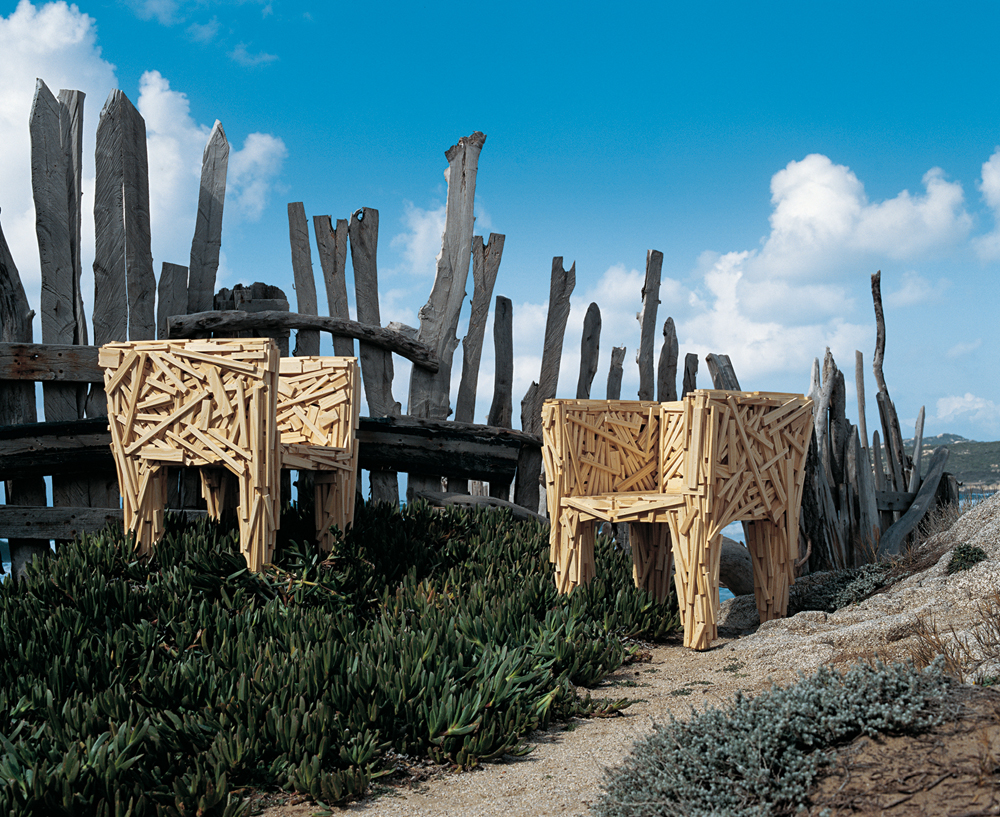
F+H Campana, Favela, 2003. Design for Edra, © Edra.
What is the last piece in limited edition you have created?
F+H: It is the Cobogò table for Plusdesign Gallery, in Milan. We presented it at the last Salone del Mobile. It is an edition of 10 pieces of a 70 cm height “terracotta” table. The first prototype has been on display in Weil am Rhein.
Do you have a daily routine? How is your day when you are at the studio and you are not traveling?
H: I wake up early and when I get to the studio I keep my eyes and hands on the manufacturing of couple projects at the same time.
F: I wake up later than Humberto and, at the studio, I keep in constant contact with the team in order to conclude all the possible projects. Yet, sometimes we switch positions. We are usually very quiet and regular in the daily activities.
What is your first thought when waking up in the morning and the last one before sleeping at night?
H: I surprise myself, every morning, with a new creation and I keep on thinking the same until I go to sleep.
F: My first thought is that I am thirsty and the last that I am sleepy.
Favorite book?
H: Memoirs of Hadrian by Marguerite Yourcenar.
F: Kalki by Gore Vidal.
Favorite dish?
H: Pappardelle al cinghiale!
F: Risotto alla Milanese and chocolate.
Favorite drink?
H: Red wine.
F: Red wine too.
Favorite cigarettes?
H: I don’t smoke.
F: Marlboro blue box!
Favorite flower?
H: Passion Fruit Flower.
F: Anthurium.
Favorite color?
H: Blue.
F: Green.
Favorite outfit?
F+H: Both jeans and t-shirts.
How did you firstly react to the invitation from the choreographer Frédéric Flamand to design the sets and costumes for his work inspired by Ovid’s Metamorphoses?
F+H: It was a great surprise and honor, because we knew Frédéric since he was director and mentor of Plan K in Bruxelles in the early 80’s and also the company used to dance in festivals in São Paulo. So almost twenty years later, he saw our work in magazines and shows and made this challenging invitation. We must confess we were scared since he is a very exigent and sophisticated director and known by his very critical eye. Thank God, we guess, we succeeded.
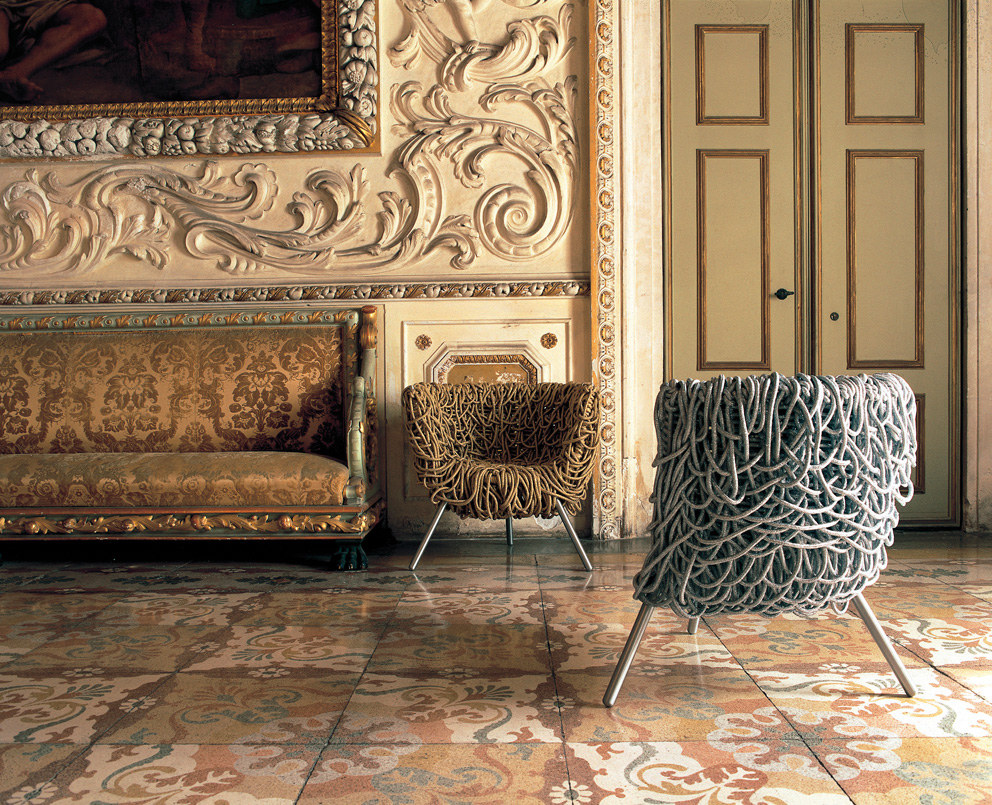
F+H Campana, Vermelha, 1998. Design for Edra, © Edra.
Set and costume designers: was it the first time for the Campanas?
F+H: Yes, it was our first time.
What is the feeling about dealing with costumes, did you feel like fashion designers?
F+H: We felt as we were sculptors and the body with the costumes was the sculpture. It seemed the body was bonded with the costumes, which were not only apparels to improve the movements, but it was part of the scenario too, almost like it were playing secondary roles… thanks to the kind collaborations of the dancers, we could create the costumes using them as models.
It is said lately that design and fashion are prominently overlapping: can you tell us the difference between conceiving a chair and a coat?
F+H: The chair is to receive a body, the coat instead embraces the body. Structurally they are different, but both have the skills to feed the ergonomic and functional needs
of the body.
What is your relationship with theater and ballet?
F+H: None, except being spectators.
You are Brazilian, can you dance?
F+H: Yes we can dance, yet not samba.
Metamorphoses by Ovid is quite an intriguing play, it tells a lot about mythology. Is there any relationship between Greek classical mythology and Brazilian one?
F+H: Nothing at all.
What is your approach to Brazilian myth or any myth? Are you superstitious?
F+H: We do not believe in witches, but if they exists…
What is the perfect holidays and where?
H: Relaxing at Rio de Janeiro’s beaches. Preferably with somebody…
F: In my hometown Brotas, with my old friends in rivers, cascades and vast fields.
You live in Brazil. Do places possess their own innate energy? Is that reflected in your design?
F+H: 100% of the times, but it’s not all.
Is there anything you don’t like or you don’t bear?
F+H: Arrogant people and intolerance.
Two words about your spirituality?
H: Spirituality is the channel for creativity.
F: When you strongly believe… everything is possible!
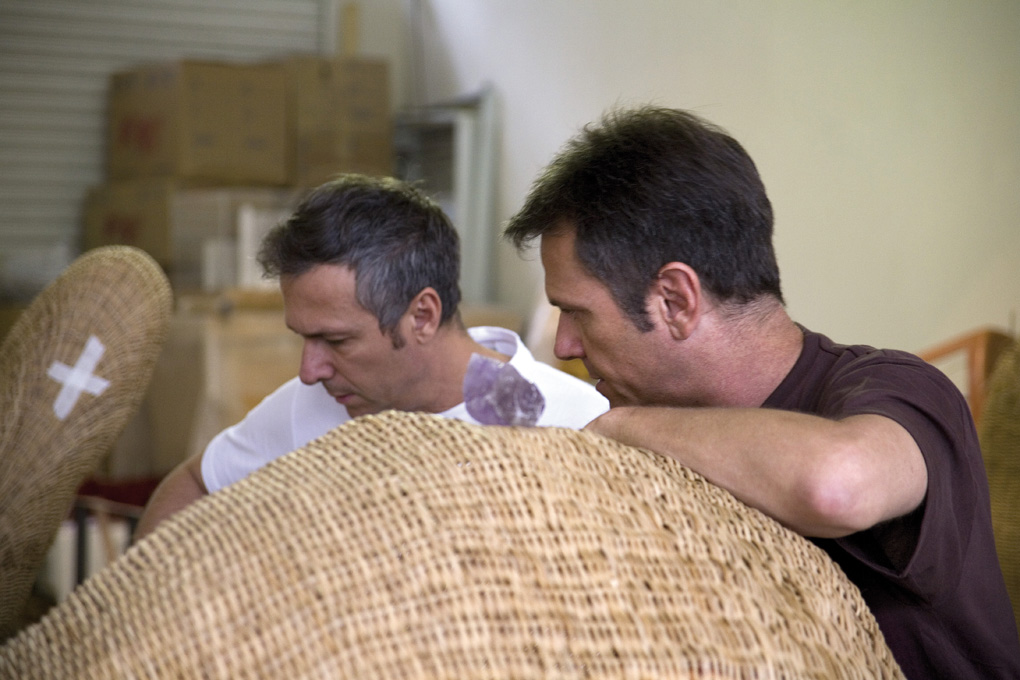
Fernando & Humberto Campana, 2008. © Estudio Campana. Photo: Estudio Campana.
A comment on this quote by Murray Moss about your work: «If life were such that the American artists Jackson Pollock and Alexander Calder had been romantically involved, moved to Brazil and, through a miracle, had produced two “love children”, these siblings would no doubt have been Humberto and Fernando Campana». Do you feel closer to Pollock or Calder works or none of them?
F: Since Calder customized the Braniff airplanes, in the 70’s, I found it extremely pop, an innovative way of art supported out of museums and galleries. I’m more Calder.
H: I feel very close to both, Calder for its passion for manuality and Pollok for his creative chaos.
How can you describe the present scenario of Brazilian architecture and design? Tell us how contemporary architecture and design can be related to a country with such a strong and peculiar heritage. And is there a definition of contemporary Brazilian architecture?
F+H: In architecture you usually find a mix of cultures, beliefs and lifestyles. Sadly, our architecture has lost some of its fertility, when opposed to the small cityscapes which comprised the urban textures of another time. After names such as Oscar Niemeyer, Paulo Mendes da Rocha, Lina Bo Bardi, João Batista Vilanova Artigas and Lucio Costa, very renowned for their perspectives, all you see today are reinterpretations of the same. Innovation no longer occurs. We believe that the dictatorship withered this wealth of thought, this freedom of expression, so to speak, resulting in this contemporary architecture, focused on the taste of each consumer and ultimately creating a country of tropically architectural strangeness.
A though about the city of Brasilia.
F+H: Regarding Brasilia, the space between the buildings reminds us of Luxor in the ancient Egypt. Geographically, the city is based over a big rock of quartz crystal.
Is there any project you would like to work on?
F+H: A garden.
Is there a particular project, design or architecture, you would like to realize yourself?
H: An armchair made of gas, just like a cloud.
F: A transparent airplane.
Is there a character in the world of architecture and/or design that has particularly inspired you in the past?
F+H: Many, among them Shiro Kuramata, Ingo Maurer, Ettore Sottsass and Andrea Branzi.
How do you see the living of the future?
F+H: Gathering past memories and material goods.
Which object epitomizes and represents architecture par excellence? And design?
F+H: The Pane Chair by Tokujin Yoshioka and Frank O. Gehry cardboard chairs.
Which object is the most necessary for mankind? And for you? What you can’t live without.
F+H: Shoes.
I know you are masters in teaching and appreciated by students for your unique way of approaching them. Your summer workshops at the Domaine de Boisbuchet, in France, are extremely attended and crowded, always overbooked. It must not be easy to transmit such a peculiar way to make design as you do. How can you manage this and do you enjoy experiences with students?
F+H: We try to contaminate our students with our creative process, to inspire them with our way of design. We try to insert freedom in their minds because whenever you feel free the mind opens up for fresh ideas. And most of all, Boisbuchet is an amazing place to have fun with responsibility.
You are currently working on the building of a design hotel in Athens: the concept was born from a workshop. How the exchange between people is important for your creativity? Is there any difference in designing a chair or a hotel?
F+H: It is very important for our progress to be in contact with other universes. We feel we recycle our brain and we are energized by the students of the workshops. For us, work with those students has been so gratifying, since we were in their company for two years and now we can see the results, we can see it was worth it. We feel like teachers, watching our students find their way to creation. Actually, it would be great if the project we created could turn into a real school.
Regarding the difference between a chair and a hotel, there is a big one, since in one we can prototype a chair as many times we wish and in a hotel we have to be very sharp in our decisions.
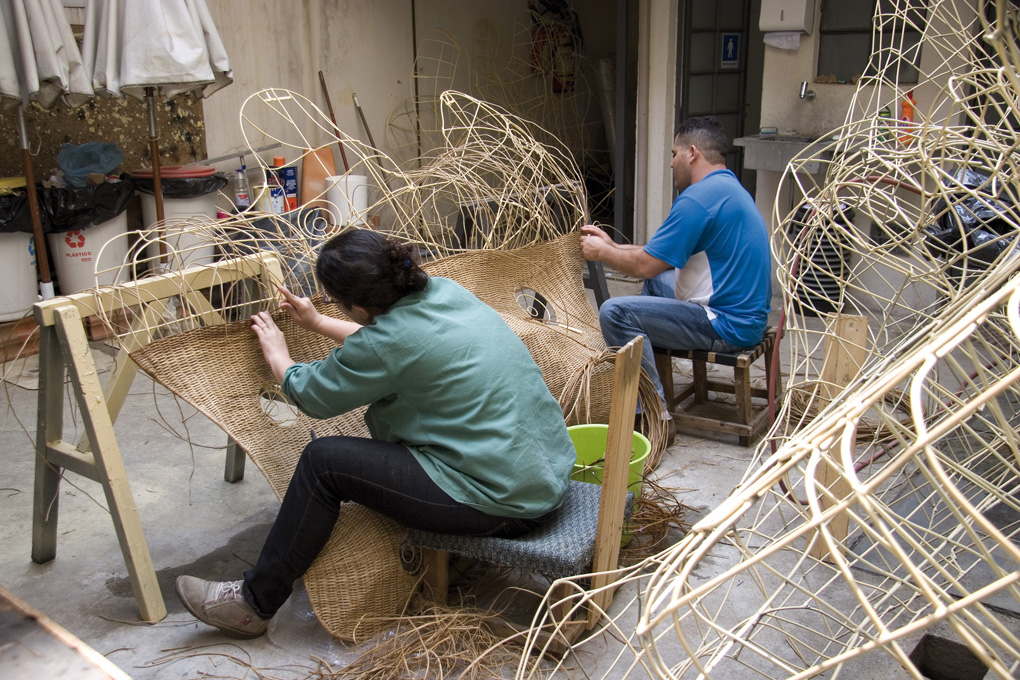
Studio Campana, Diamantina III, produzione. © Estudio Campana. Photo: Estudio Campana.
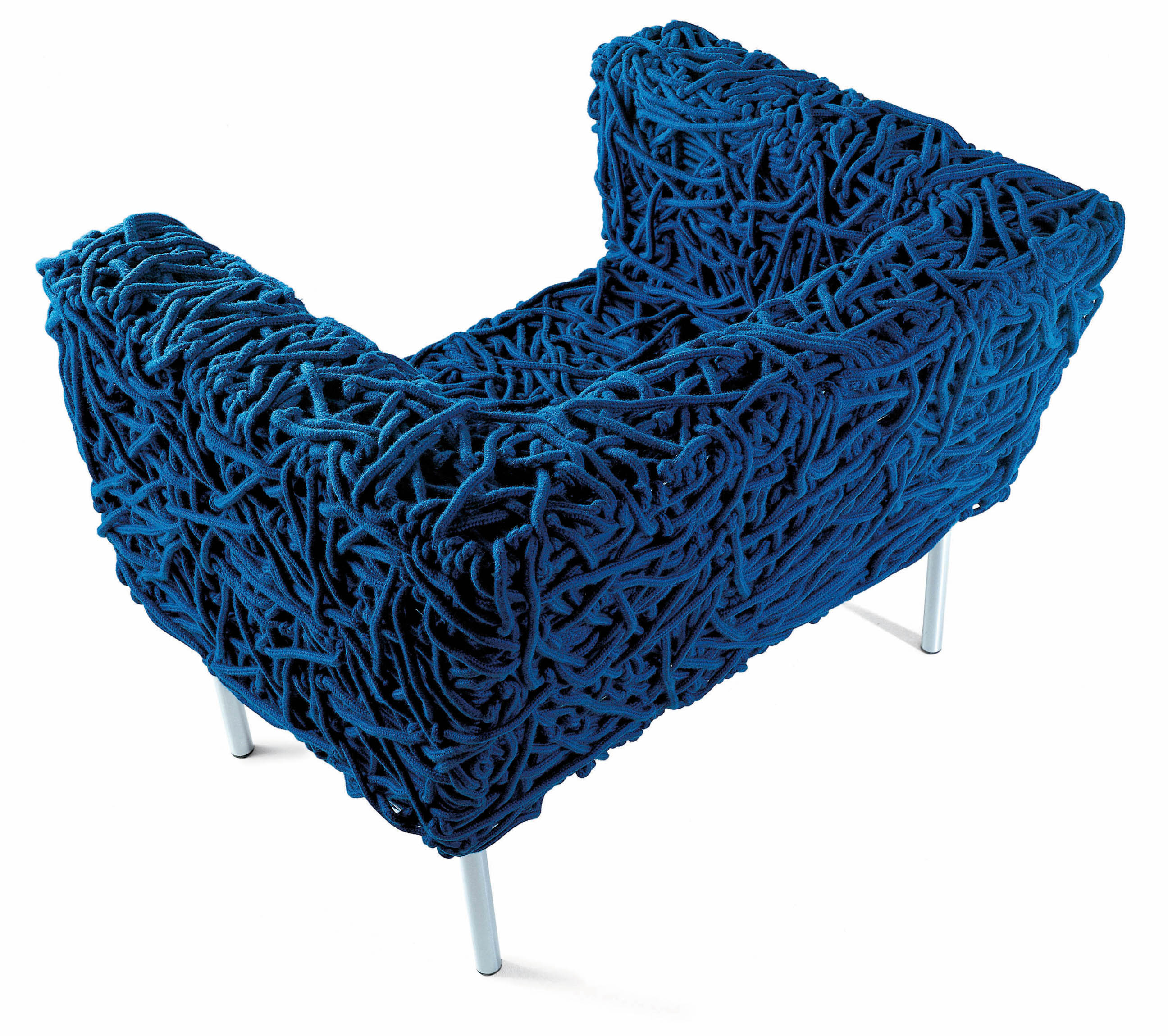
F+H Campana, Vermelha, 1998. Design for Edra.
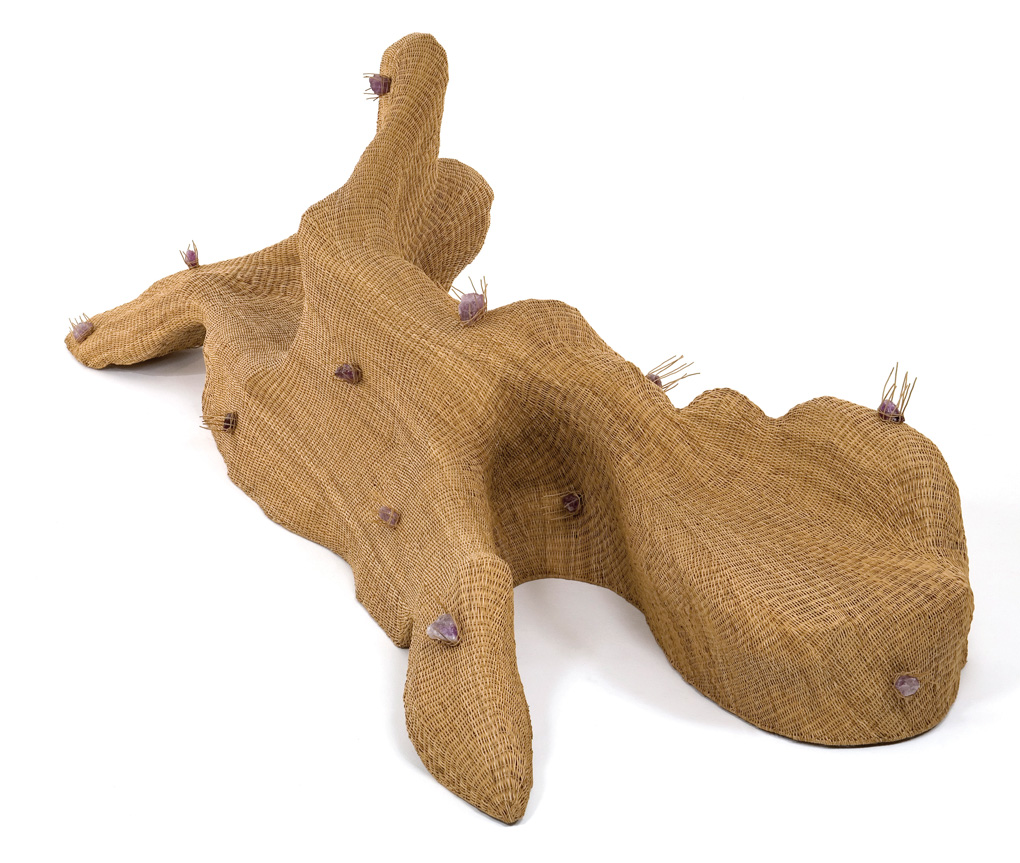
F+H Campana, Diamantina III, 2008. Seating landscape, © Estudio Campana. Photo: Fernando Laszl.
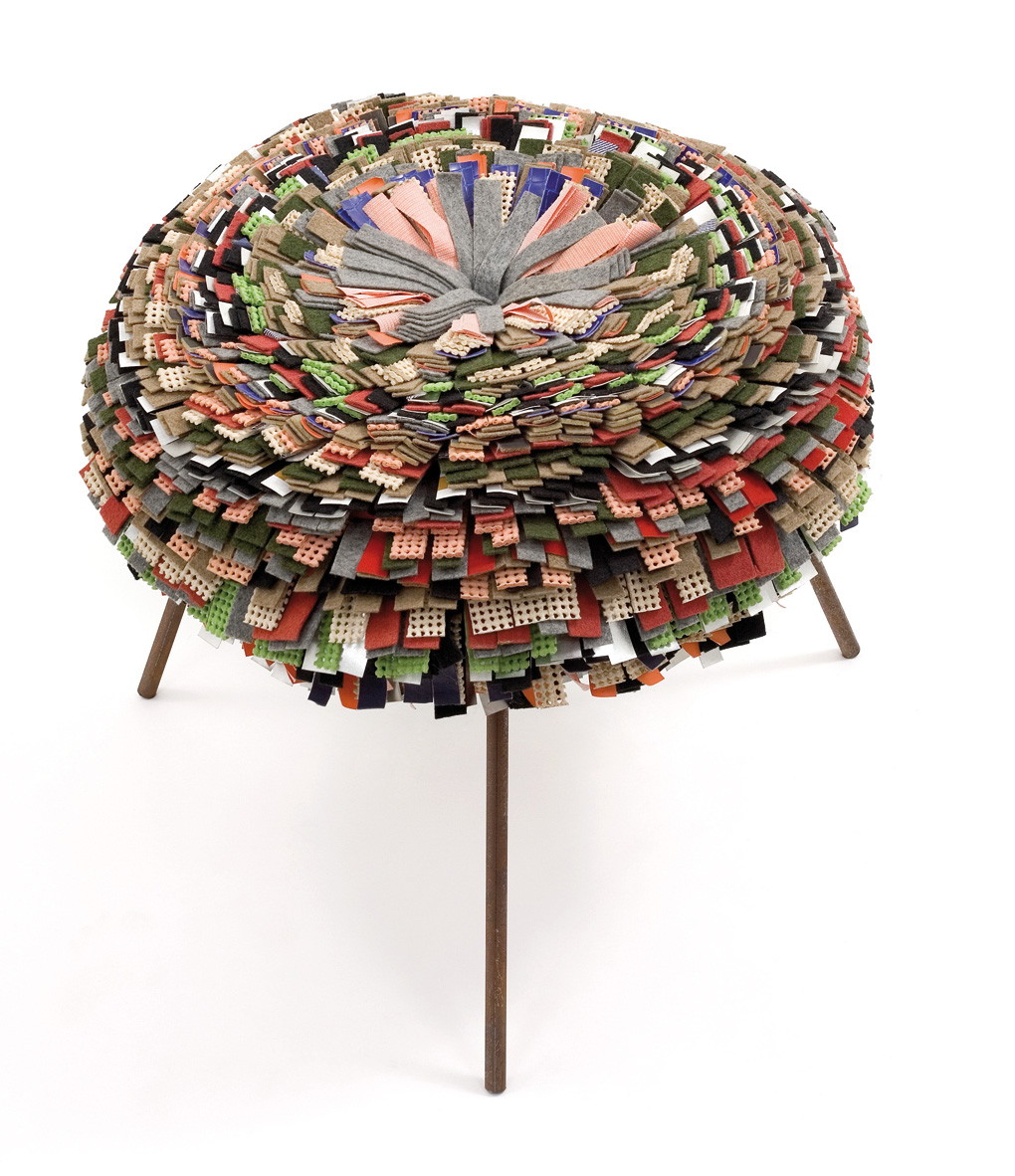
F+H Campana, Pom Pom, 2002. © Estudio Campana. Photo: Fernando Laszlo.
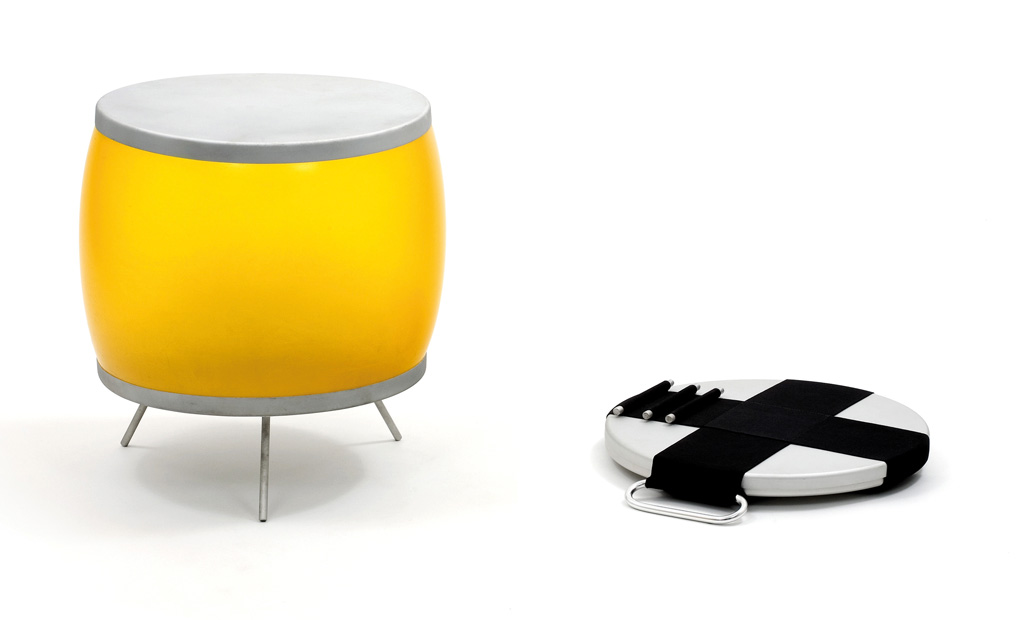
F+H Campana, Inflavel, 1995. Design for MoMA, New York, © Estudio Campana. Photo: Fernando Laszlo